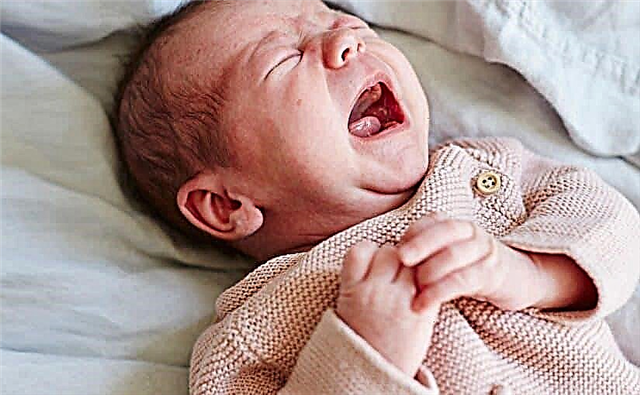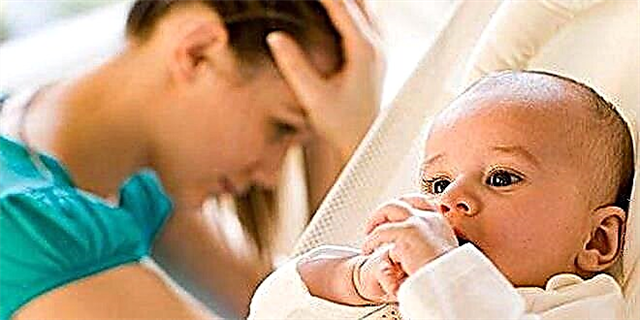
Babies born earlier than expected develop slightly differently than full-term babies. Their development proceeds at a faster pace, and by one year old a premature baby practically does not differ from a baby born on time.

However, in the first months after birth, the differences will be significant - both in appearance, and in the rate of weight gain, and in the development of different skills.
Features of development with prematurity
Premature babies include babies who were born between 21 and 37 weeks of gestation. Their development is distinguished by the following features:
- Babies learn basic skills several months later than their full-term peers. If the baby was born before 32 weeks of gestation, then the lag is 3-4 months, and for babies who were born after this period, the lag will be only 1-2 months.
- Babies weighing less than 1500 g require special conditions immediately after childbirth, so they are kept in incubators, in which conditions are close to intrauterine conditions. After gaining weight up to 1700 g, the baby will be mixed in a crib, which has heating. When the baby's body weight reaches 2000 g, special thermal support is no longer required.
- Due to the special functioning of the nervous system of the crumbs at birth prematurely, such babies need increased attention. It is very important to surround the baby with affection and, after discharge, to create comfortable conditions at home.
Thermoregulation of a premature baby has its own characteristics. The room should have a temperature in the range of 20-22 ° С, and humidity - 50-70%. For more details, see the program of Dr. Komarovsky.
Appearance
A premature baby looks like this:
- The baby's body weight is very low, and the growth is tiny.
- The skin of the baby is thin, with many wrinkles, in the first days it is pronounced red.
- The auricles are thin and soft and can stick together.
- On the back and limbs (and sometimes on the face) there is a soft hairline called lanugo.
- The baby's head looks disproportionately large, it corresponds to about 1/3 of the body length.
- The baby's belly is large and the navel is lower.
- The neck and limbs of the toddler are short.
- The plates on the nails are very thin, almost transparent.
- The external genital organs are not fully formed - in boys, the testicles have not descended into the scrotum, and in girls there is a gaping genital fissure.
- The large fontanelle is displaced due to the underdeveloped skull.
- The small fontanelle may have skinless areas.
- The child is lethargic and weak.

Height and weight in the table
Depending on the initial weight of the baby, several degrees of prematurity are distinguished:
- Grade 1 - children weighing from 2 kg to 2.5 kg. They are usually born at 36-37 weeks. By the age of one, such babies increase their weight by 4-5 times.
- Grade 2 - babies weighing from 1.5 kg to 2 kg. This weight is typical for babies born at 32-35 weeks of gestation. By one year, their body weight increases by 5-7 times.
- Grade 3 - children weighing 1-1.5 kg. Such babies are called low birth weight babies or deeply premature babies. They are born at 28-31 weeks of gestation, and by the year their weight increases 6-7 times.
- Grade 4 - babies weighing less than 1000 g. This weight is called extreme. They are born for up to 28 weeks and increase their weight by a year by 8-10 times.

The rate of weight gain for premature babies in the first year of life will be something like this:
The increase in growth is also determined by the degree of prematurity of the baby and will be:

Caring for a premature newborn has its own characteristics. Be sure to check out our article.
1 month
Premature babies in the first month of life may not be active. They are often inactive, and their muscle tone is reduced. They gain weight very slowly and most often just compensate for the weight loss in the first days of life.
The sucking reflex is often absent, so the baby is fed with a tube. Children who are unable to breathe on their own are given artificial lung ventilation.

In the first month, mother should constantly be close to the baby, providing him with bodily contact and the ability to hear her voice.
2 months
By the beginning of this month, the baby begins to gain weight more actively and add more in body length than his full-term peers. However, he, as before, quickly gets tired and is very weak. It is very important to provide the baby with enhanced nutrition. If your baby is not breastfeeding, it is advisable to express milk and feed it as many times as necessary.

By the end of the month, the toddler learns to lift the head in the position on the tummy.
3 months
Weight gain at this age is quite active, so many babies double their weight at birth. The baby reacts well to sounds and light, but the baby still sleeps most of the day.
4 months
A premature baby of this age already knows how to raise and hold his head for some time. The baby learned to fix his gaze on a contrasting object, and also began to make sounds that resemble humming. In the daily routine of the baby, there must certainly be walks, gymnastics, massage and bathing.

Often at this age, muscle tone increases, which is why the baby often wakes up or finds it difficult to fit into the bed.
5 months
At this age, a premature baby gives mom the first conscious smile. Due to the slightly increased tone of the limbs, the baby's movements are still a little convulsive, but the baby is already able to hold a small rattle in the handle. Mental development is progressing rapidly. The kid already easily finds the source of the sound by turning his head.
6 months
An infant of this age begins to catch up with the development of peers born full-term. Its weight triples when compared with the weight with which the baby was born. He recognizes loved ones and distinguishes their voices, babbles a lot, laughs, and plays with toys. If you support the crumb under the armpits, the crumb will rest its feet on the surface and push off like a spring.

Some 6-month-olds learn to do tummy flips from the back.
7 months
Kids of this age easily turn over on their stomachs, take toys in their hands, can crawl a little to the toy in front of them, babble for a long time, learn to eat from a spoon. The "speech" of the toddler is so diverse that it is comparable to the babbling of full-term babies. If the baby is born at 35-37 weeks, the first teeth begin to cut.
8 months
By this age, the baby has already quite well learned to control his own body. He deliberately rolls over, stands on all fours and sways, tries to sit down and crawl.
The psychological development of the toddler is also progressing. The kid understands the speech addressed to him, searches for the named object, listens with pleasure to songs and rhymes, actively absorbing all the information received.
9 months
At this age, many babies are already able to sit on their own, and also begin to climb on their legs, holding onto the railing of the crib or arena, and then sit back down. The first teeth appear in toddlers born at 32-34 weeks.
When the baby is awake, he plays with toys for a long time. The child can already fulfill simple requests, for example, wave goodbye or give a hand to say hello. In the "speech" of the little one, short words or only the first syllables of words appear. The kid learns to reproduce the intonation of an adult's speech.

10 months
By this age, most babies learn to stand independently and, holding on to the fence, move along it. The first teeth appear in babies born before 31 weeks.
The toddler is already able to keep his eyes on the toy that moves for a long time. A variety of earbuds and balls are especially interesting for the kid.
The baby already knows his own name well and listens with interest to the speech of an adult, learning new words.
11 months
Some babies at this age take their first steps. Those children who are not yet ready to walk crawl quickly, easily get up and sit down. Babies 11 months old love cubes and pyramids, as well as different wheelchairs and cars. The child knows many everyday activities and performs them upon request. Many short words appear in his speech, denoting animals and objects.
12 months
By the age of one year, premature babies hardly differ from those born on term, either by physical indicators, or by psycho-emotional development, or by acquired skills. In some babies, movements may still be excessively sharp and uncoordinated, but in general, children of this age are very mobile and active.

For more information on the development of premature newborns, see the following videos.



